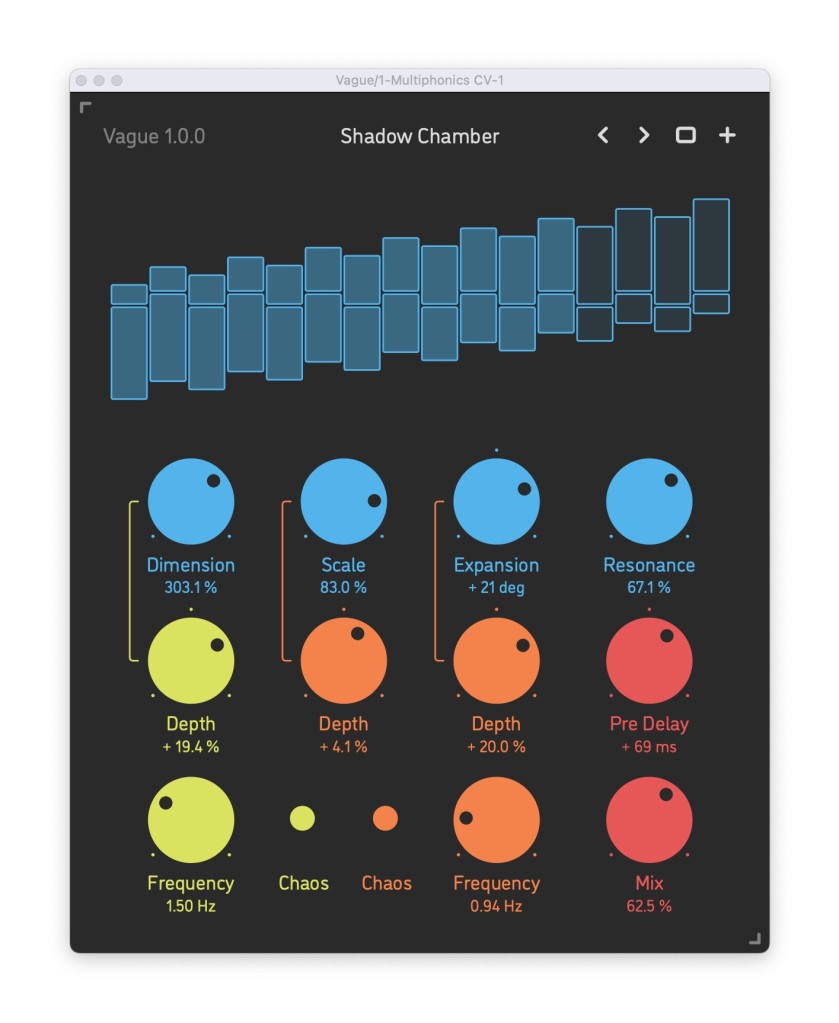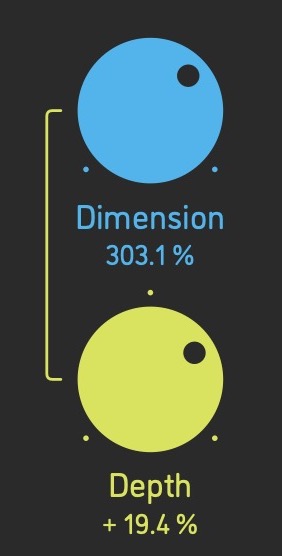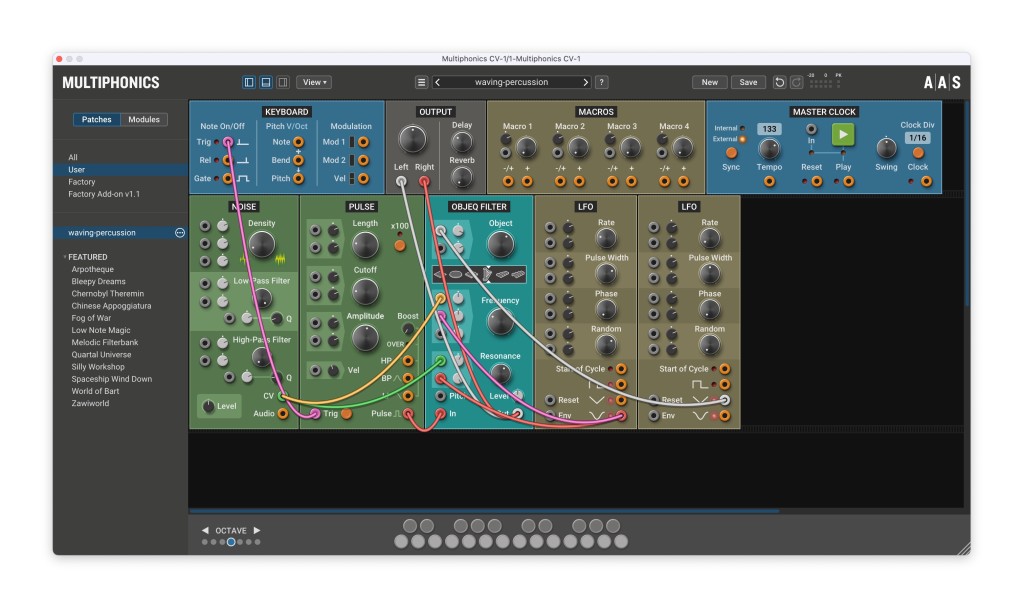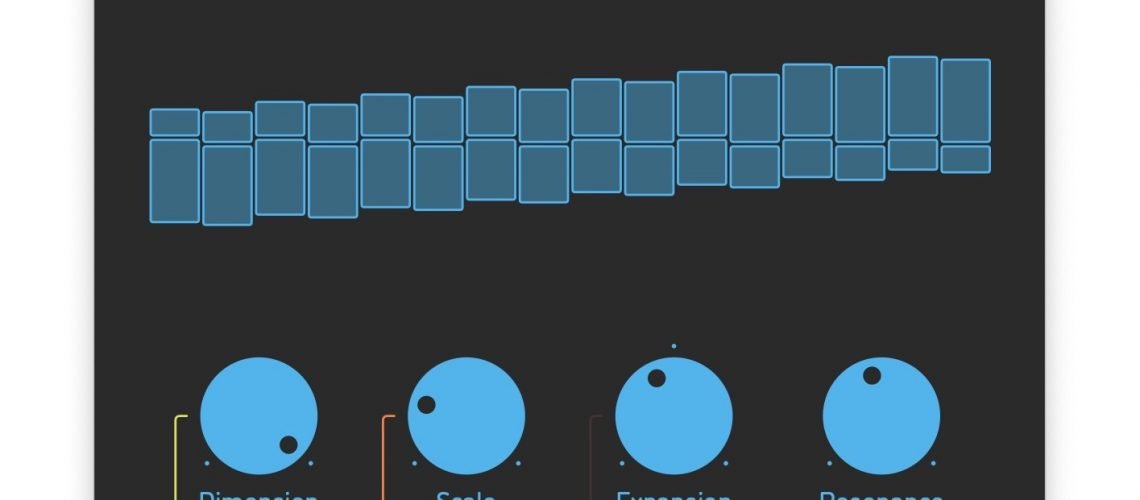What if you could take the early reflections part of a digital reverb, and turn it into an undulating, stereo-phasing, diffusing blurring granulating unison alchemic wonder? And what if you could give it an easy-to-grok UI? Sinevibes did just that, and the results are unlike anything else.

Okay, technically speaking, “Vague” is “a binaural time diffusion processor” that runs signal “through a virtual space comprised of 16 all-pass comb filter stages” of increasing delay times, plus binaural expansion via stereo offsets, plus crossfaded snapshots of four points in the signal path, plus modulation. Whew.
But what does that mean in musical terms? Well, if you ever enjoyed the weirder parts of a reverb at its extremes, or you ever cranked up a digital reverb’s early reflections stage, or tried to tune reverbs to get blurry or unison or leftfield or granular results, this is the effect for you. It’s not a reverb, and it’s not a model of anything else. It’s capable of a broad range of reflective, three-dimensional sounds, from unisons to choruses to longer textures.
The stroke of genius here is partly the visualization on the UI. Sinevibes’ Artemiy has long made a name for the line with clean and intuitive UIs. Here, the abstraction really helps you to see what you’re hearing – a clear set of controls sit underneath a series of rectangles representing those all-pass comb filters. You can easily see the effect of changing stereo offset (for width), time diffusion, and scale, as the rectangles slide up and down and fill in as you adjust parameters.
It sounds really, really good with short plucks and percussion and impulses. For instance, here’s me using some physical modeling courtesy AAS – Multiphonics (their modular), String Studio VS-3, and Chromaphone 3, plus three instances of Vague.
See below for some more examples from Artemiy using hardware. (Yep, y’all “DAWless” folks can say what you want – even live and with great gear, it’s sometimes useful to keep the lappy around for added toys. Though we’ll see if Sibevibes ports this to the KORG ‘logue platforms.)
It’s helpful to understand some of the parameters here, though they’re also intuitively named and fun to play with even before you crack the documentation. (Sinevibes includes an easy-to-follow, meticulously detailed manual which is well worth a read!)

- Dimension crossfades between four snapshots of the virtual space
- Scale determines the overall size
- Expansion sets binaural field offset – so it gives you stereo width (you can use this in mono, stereo, and mono-stereo modes)
- Resonance is, well, best understood as resonance, but technically it’s the “amount of internal feed-forward and feedback gain” in the filters. Uh, yeah, let’s stick with resonance.
You also get two LFOs. LFO 1 is routed to Dimension with depth; LFO 2 has separate amounts for Scale and Expansion. I missed this at first – there are color-coded brackets that show the relationship of LFO Depth to the parameter it’s controlling.

In addition, you get per-LFO Chaos which is frequency / amplitude modulation of that LFO from random triangle generators, a separate pre-delay line, and mix.
Even Artemiy suggested stepping through presets to get started, but those additional controls provide a lot of nuance and hidden possibilities. I also enjoyed making modifications from the presets as a starting point, since they’ll guide you into particular areas of functionality – chorus-y, granular-ish, unison-y, whatever. (Those are words, right? Let’s use them as words now.)
It’s brilliant, brilliant stuff, and might just be my favorite Sinevibes plug-in yet – both sonically and visually.
AAX, AU, VST3, macOS 9+, Windows 8.1+, 64-bit Intel and Apple Silicon support. US$29 with a demo version available.
More great Ukrainian engineering.
https://www.sinevibes.com/vague/
Additional demos from Sinevibes:
Lord it sounds good on loops:
With guitar (huh, like some kind of external object apparently? dunno, I used string plug-ins)
But yeah, it works on pads and as a chorus-y thing, too, and I should talk about how much I love Rhizomatic Plasmonic. This is a little harsh on its own, maybe, but then you could feed it into the excellent Sinevibes Hollow (which I’ve already been pairing with Plasmonic, as it happens)!
Oh, PS, if you’re curious – here are the patches from AAS I was using. That turns out to be a really nice combination (like I was looking for just this sort of sound), as would other plucks, minimal percussion, and physically modeled stuff.







